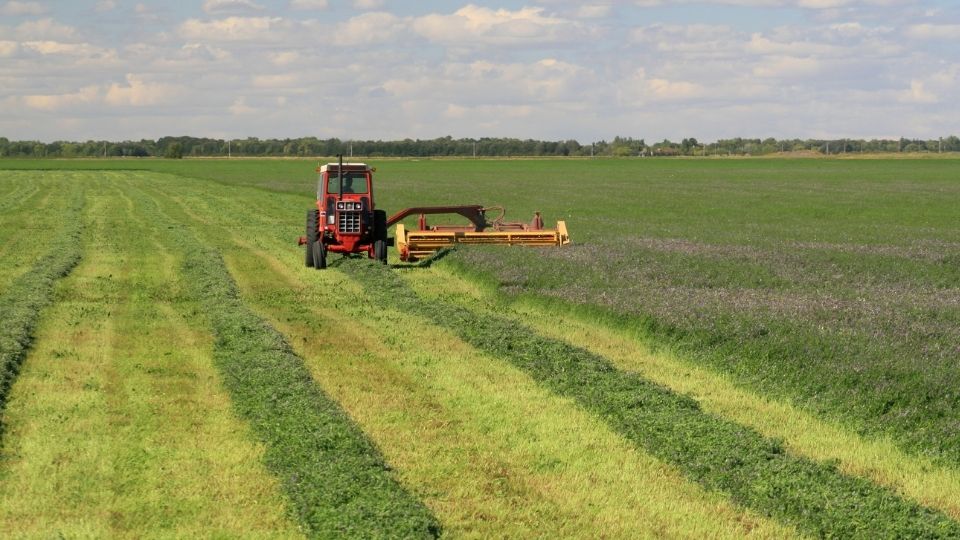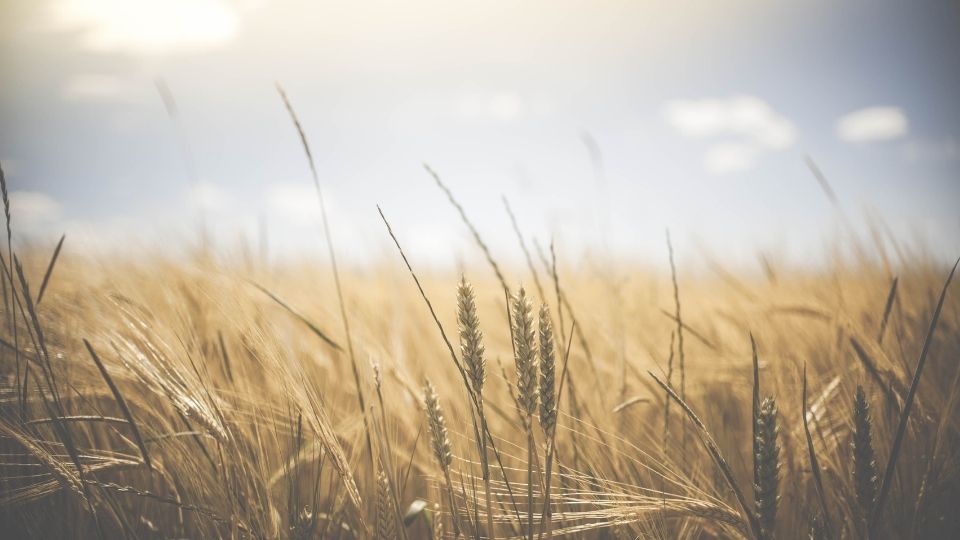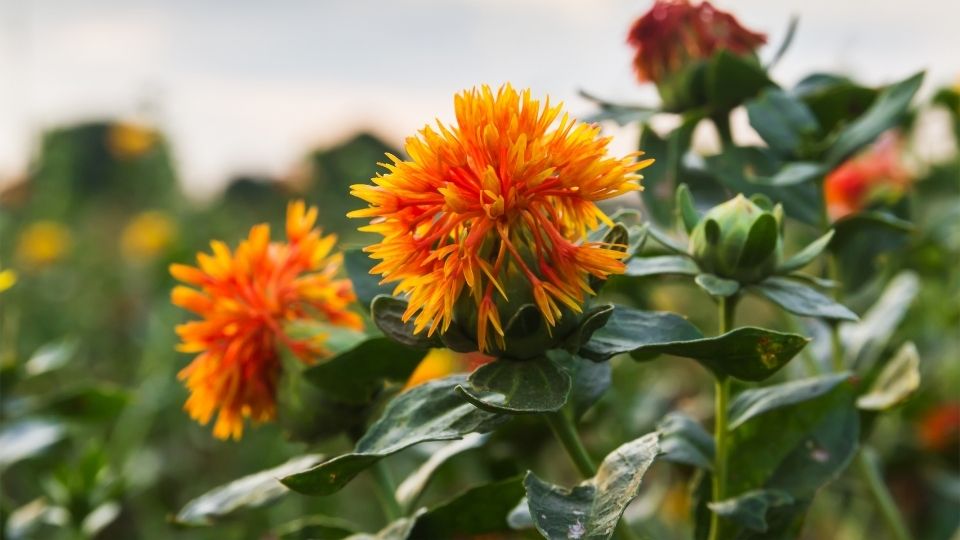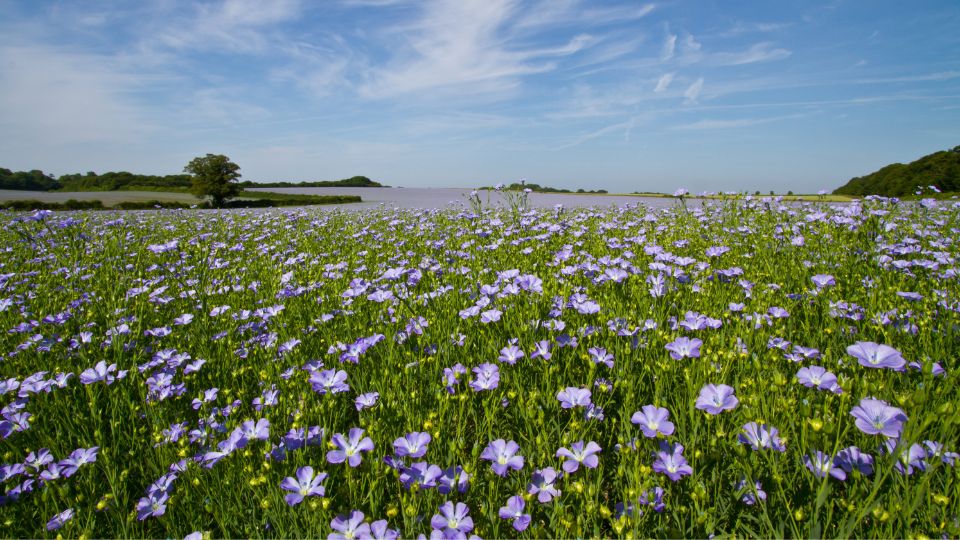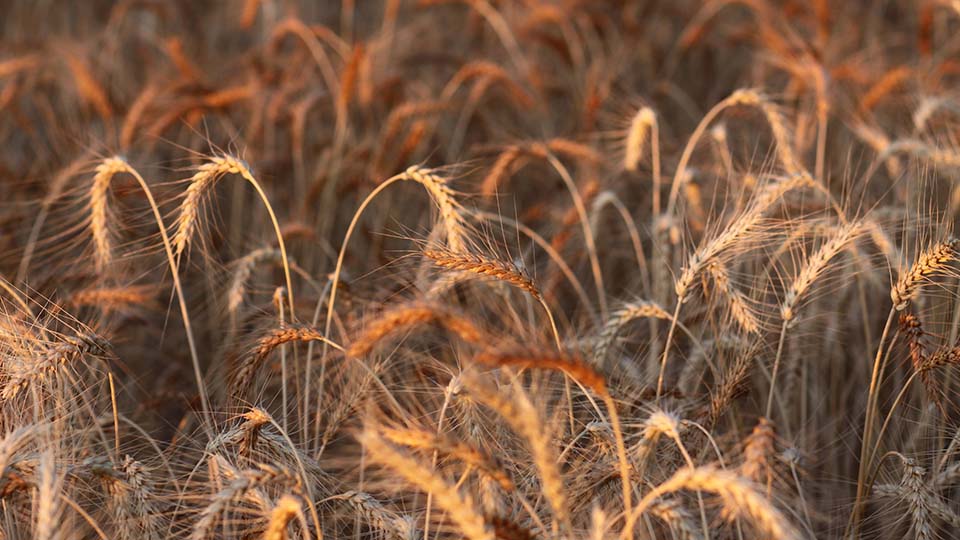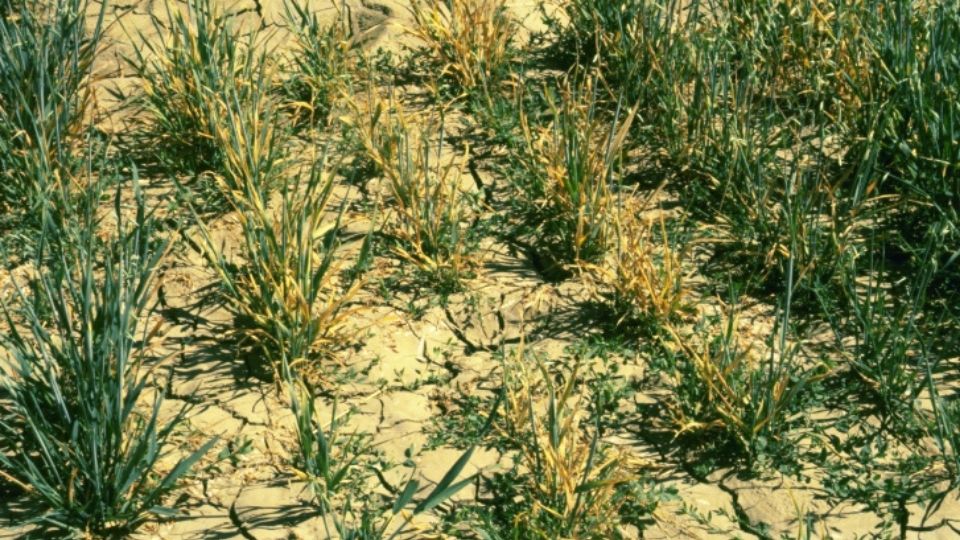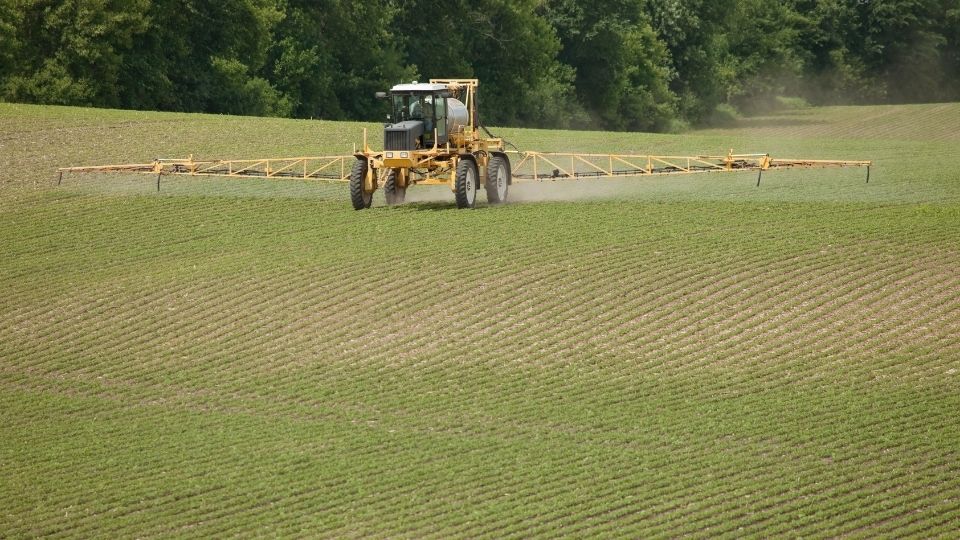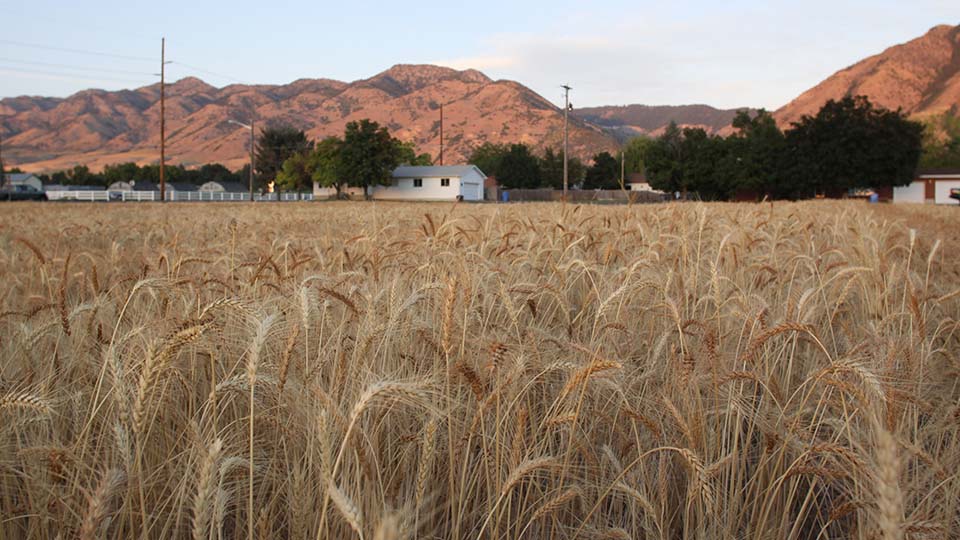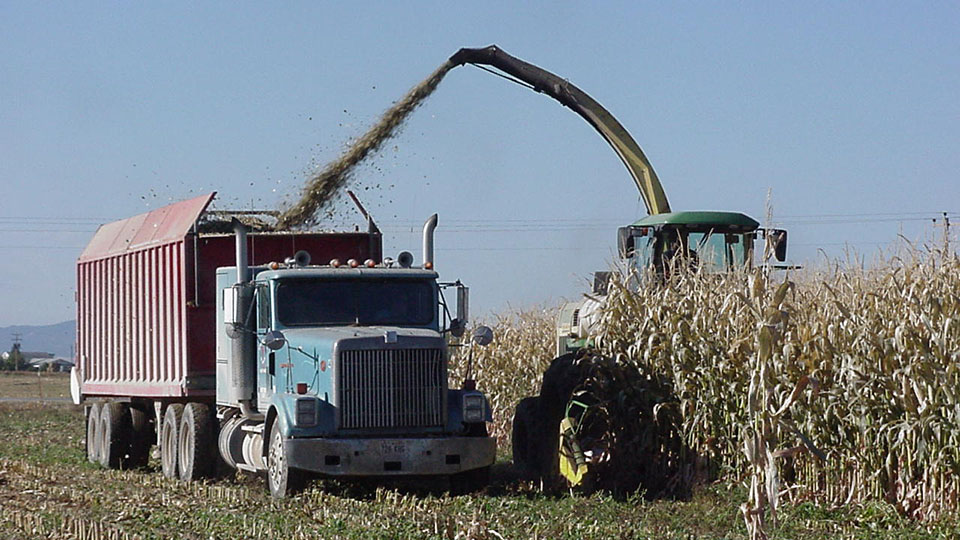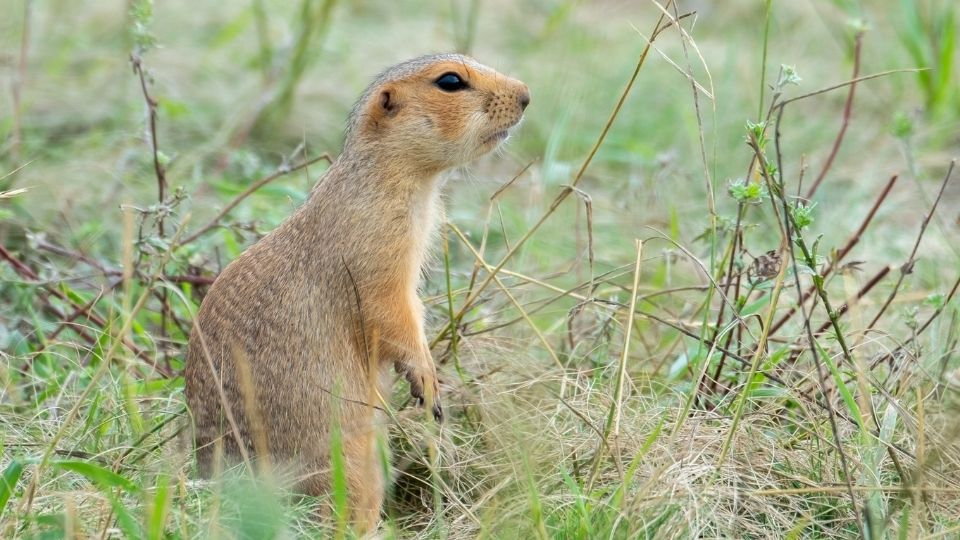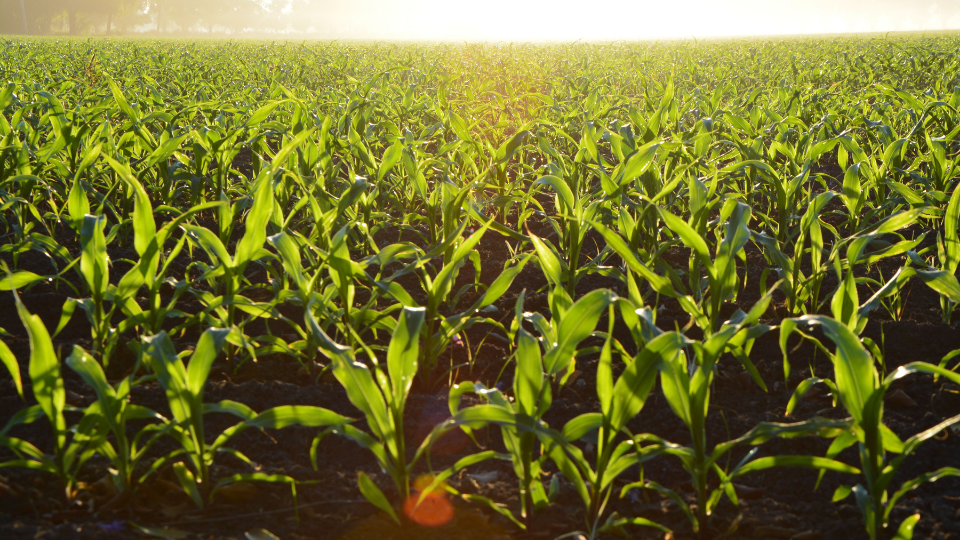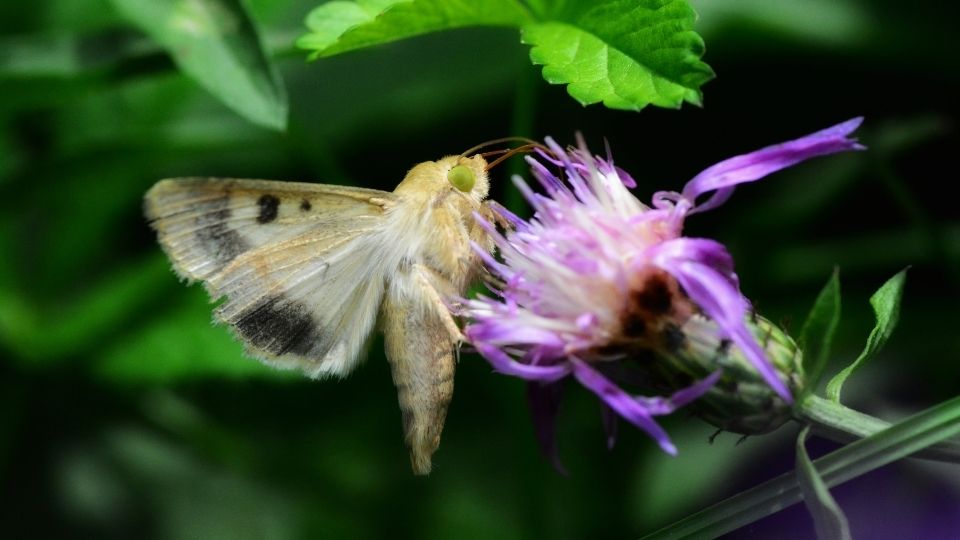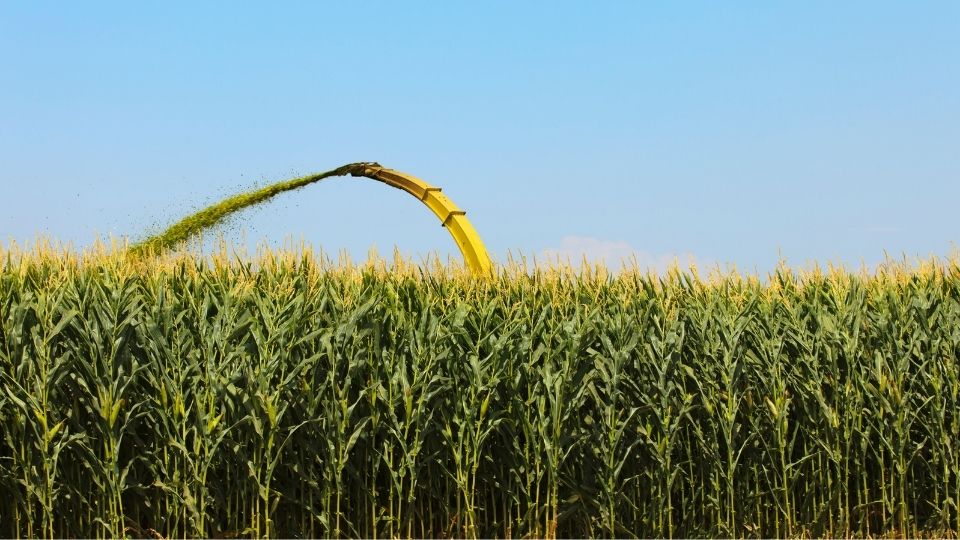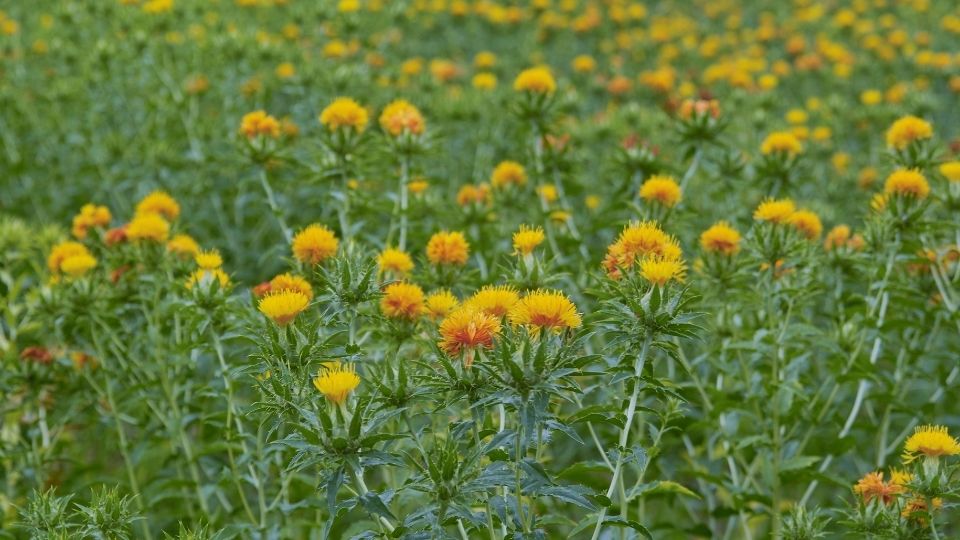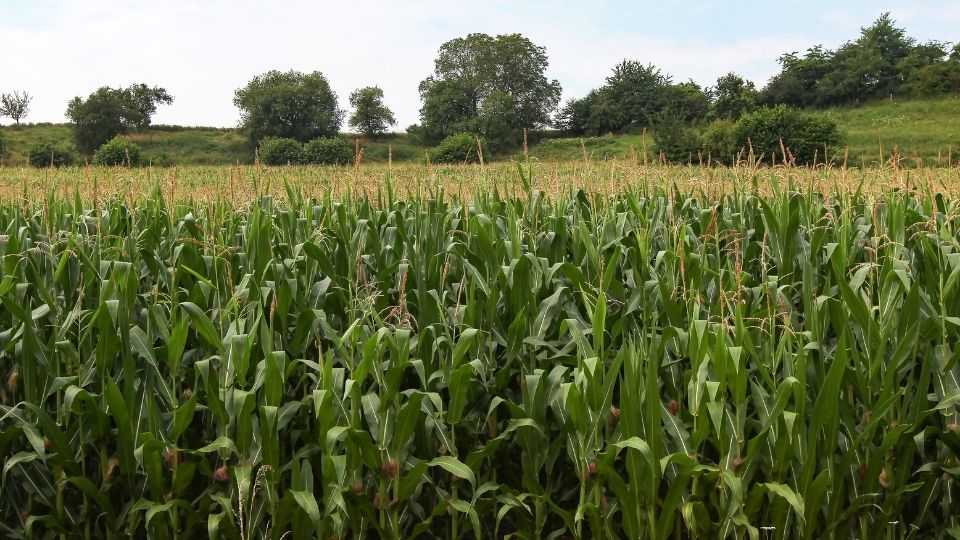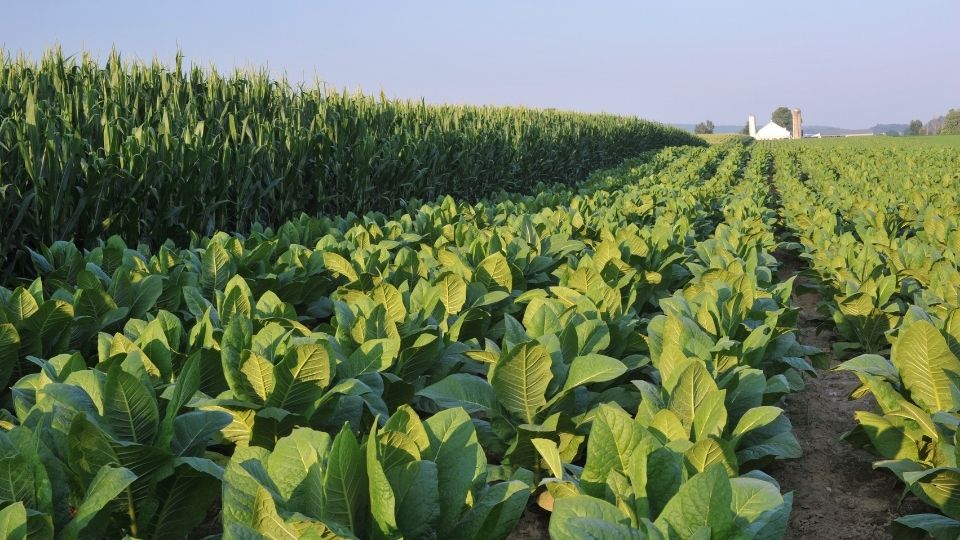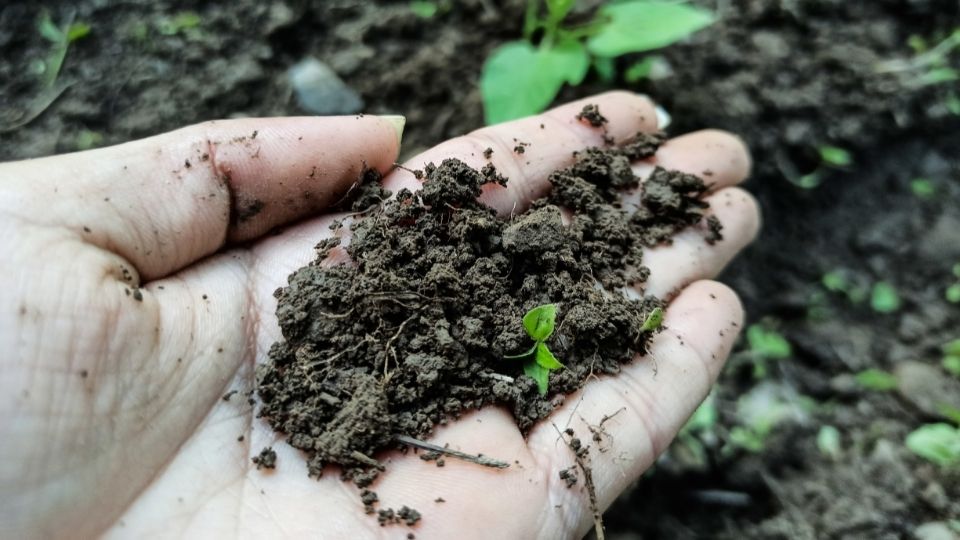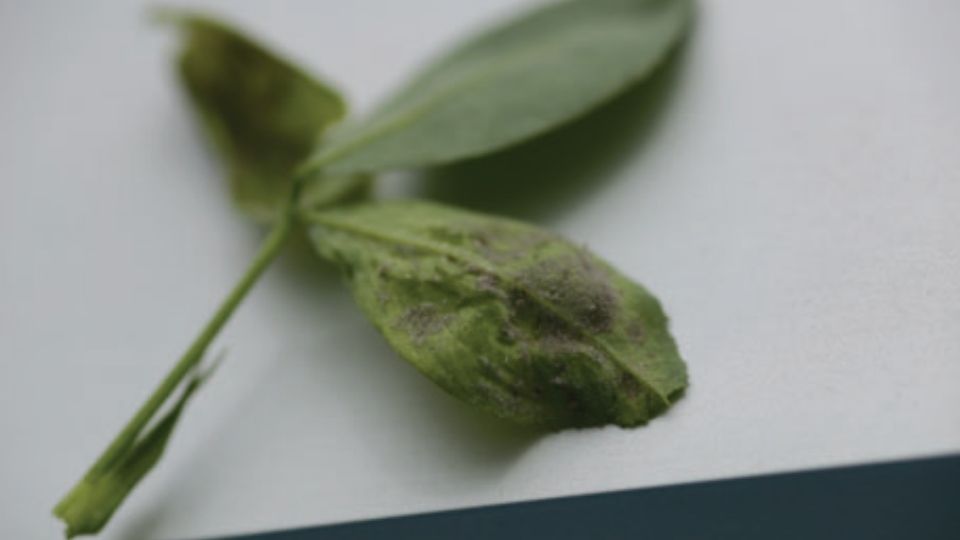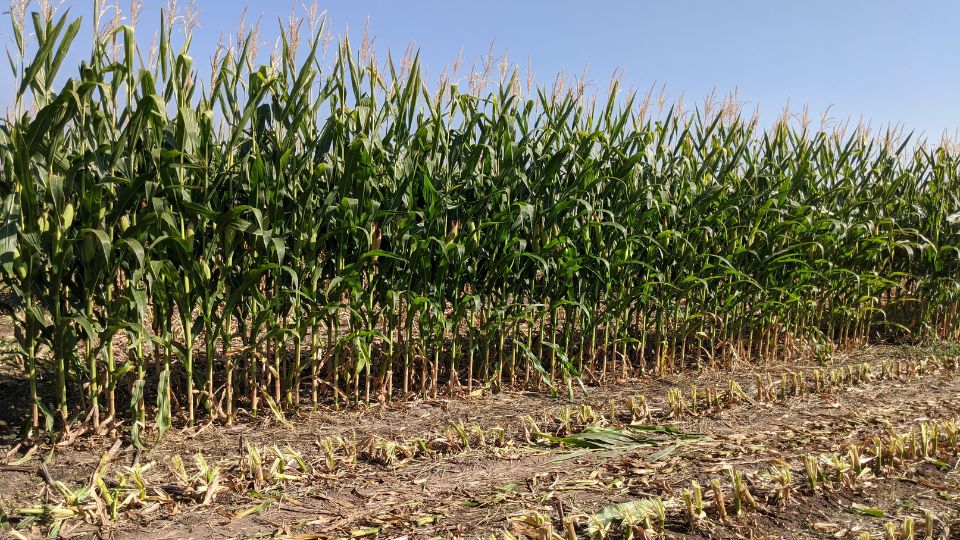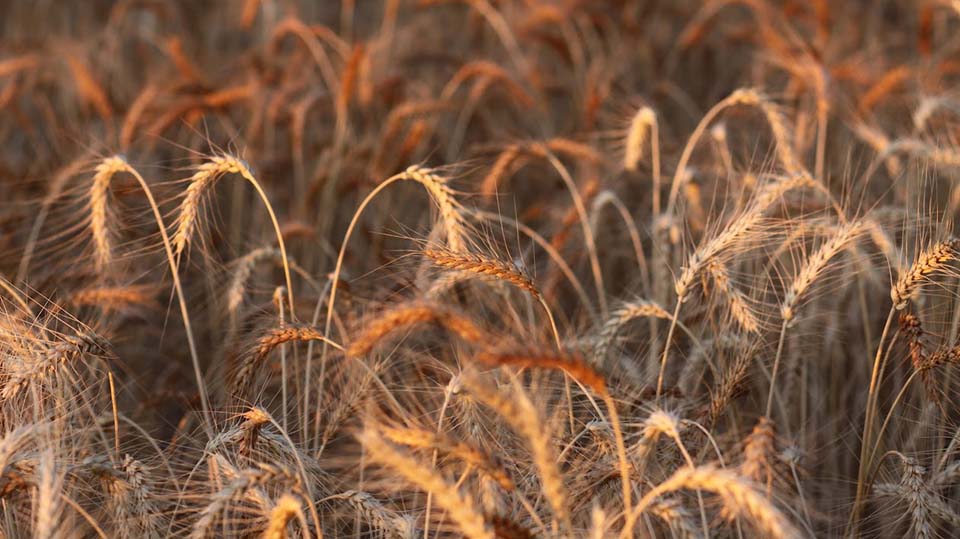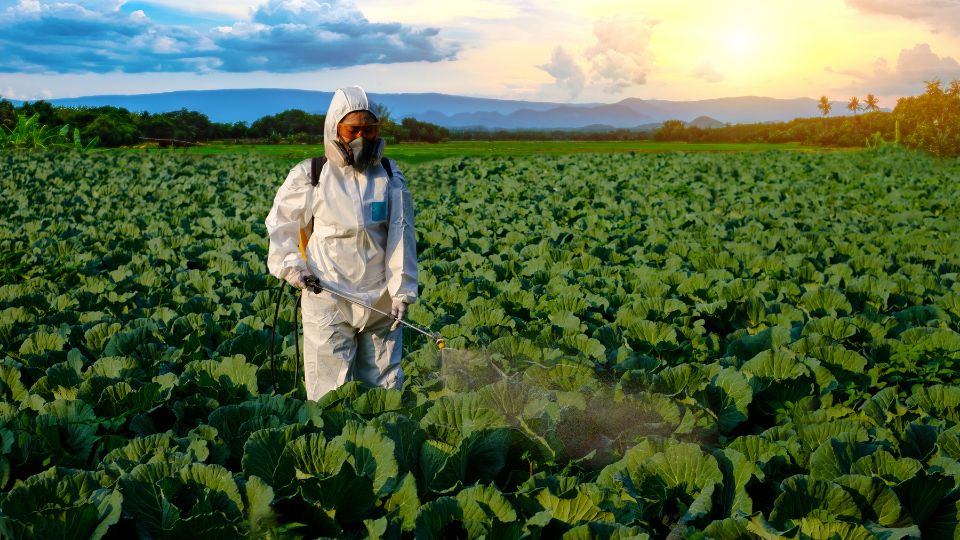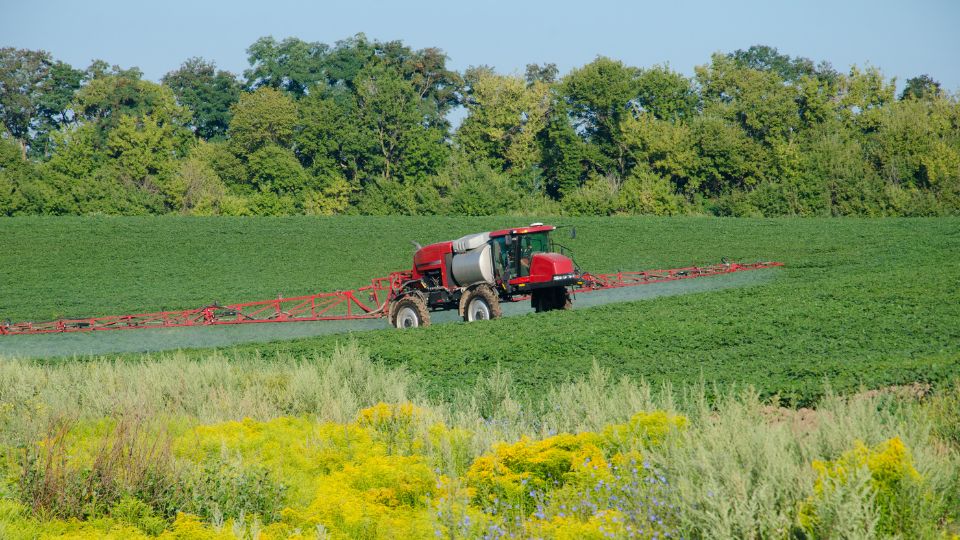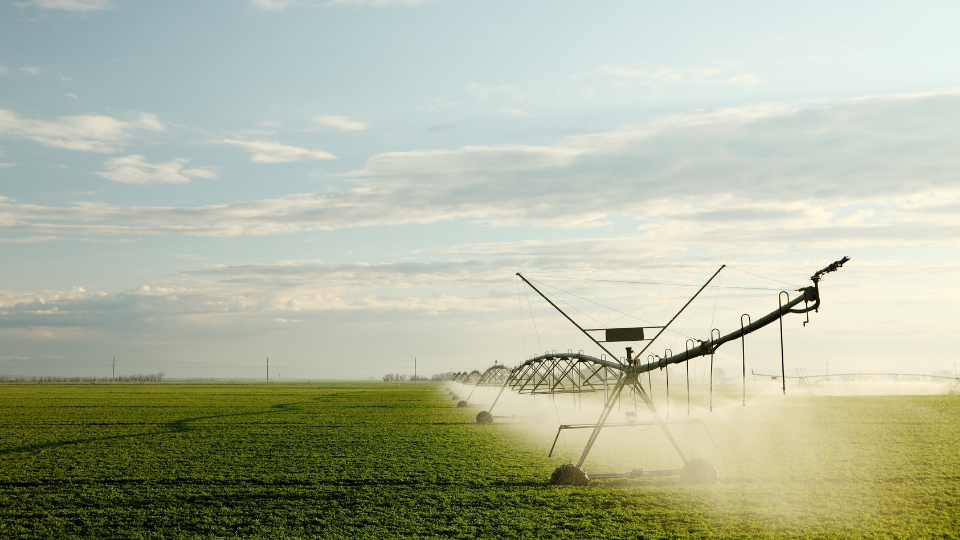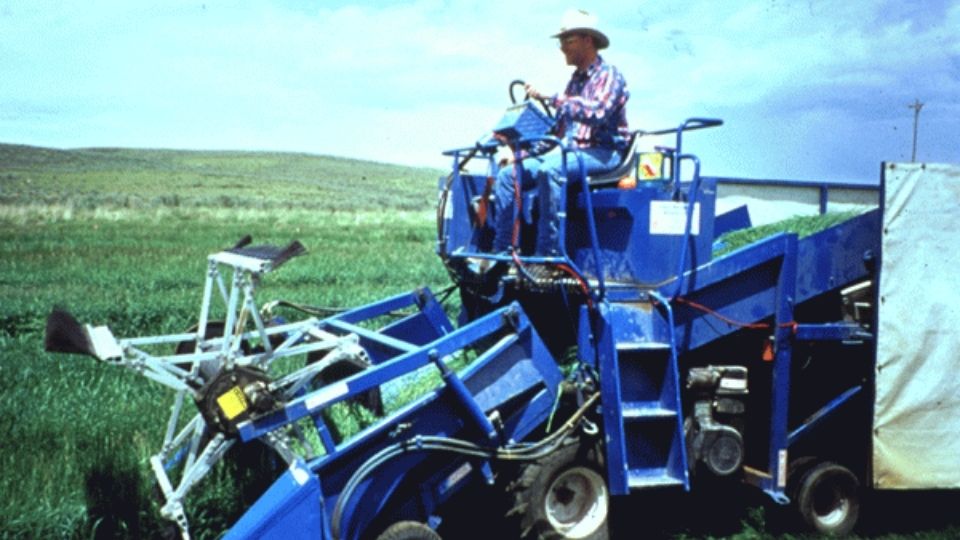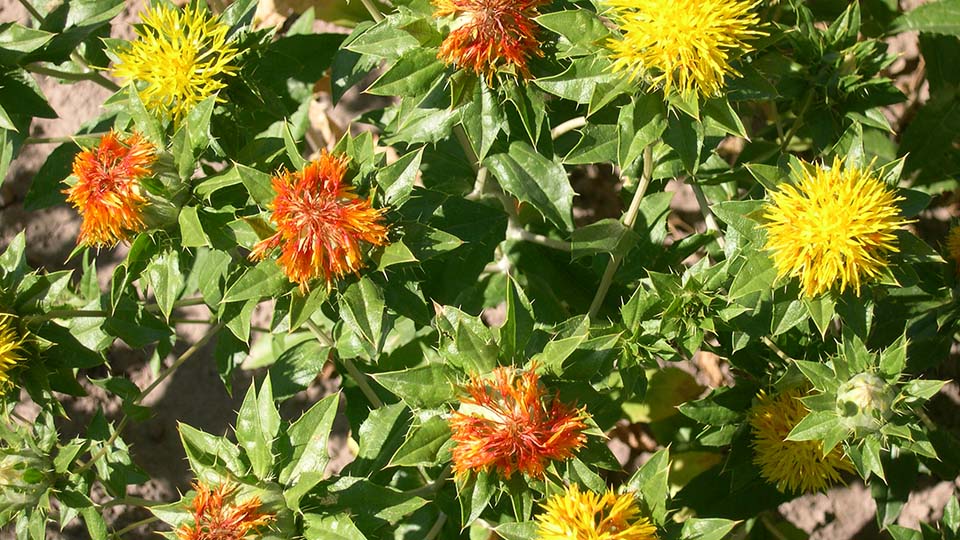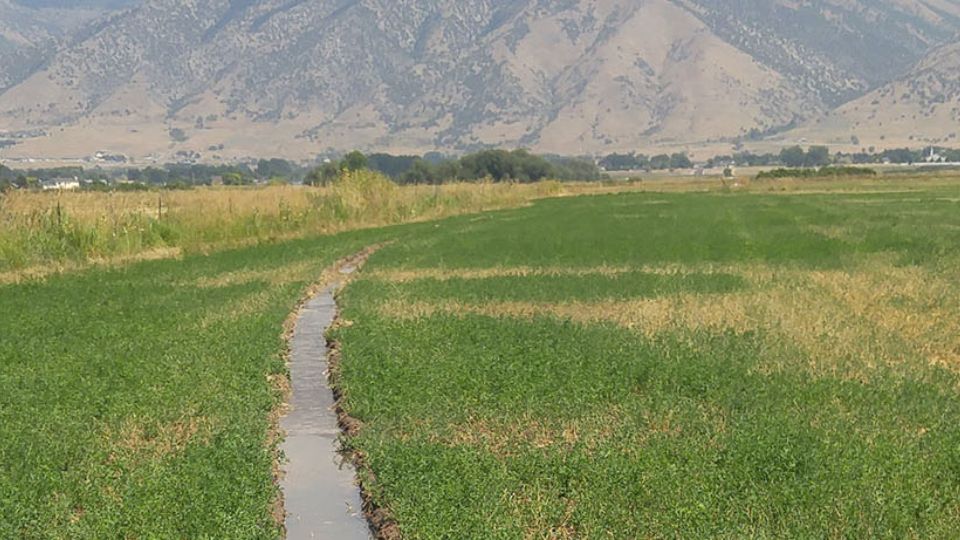Aphids in Alfalfa

What You Should Know
- Aphids are soft-bodied insects that remove plant sap from stems and leaves.
- Heavy infestations can reduce plant vigor, and cause leaves to wilt, curl or become mottled.
- Some aphids can vector disease or plant toxins while feeding, and cause plants to decrease in productivity.
- Aphid-resistant cultivars and natural enemies can help reduce the negative effects of aphids in alfalfa.
Aphids belong in the order Hemiptera and family Aphididae. Aphids are common insects in field and forage crops, with at least six kinds in Utah alfalfa (Table 1). Aphids can be distinguished from other insects in alfalfa with a hand lens. In general, aphids are soft-bodied and pear-shaped, with adults ranging from 1/16 - 1/4″ in length. Adults have a pair of long antennae, a pair of cornicles (that resemble tailpipes) towards the end of the abdomen and a cauda at the tip of the abdomen (Fig. 1). The antennae aid in finding suitable host plants and the cornicles release alarm pheromones to alert the colony of predators.

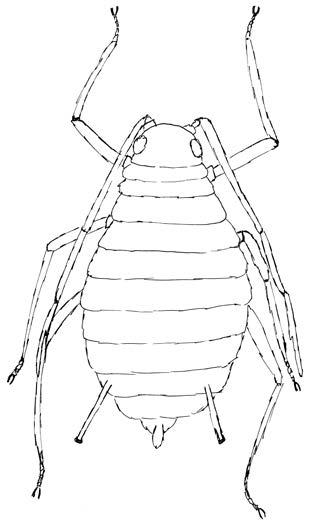
Plant Damage
Aphids have piercing sucking mouthparts and remove phloem or plant sap juices with a flexible stylet (Fig. 1). Wingless aphids are not very mobile insects, and tend to stay on one plant. As a result, some plants can become heavily infested as the colony grows over time. Winged aphids locate potential hosts by using visual cues, and will often quickly probe plant tissue before settling to feed. As aphids pierce plant tissue, the stylets pick up small virus particles. Aphids can then vector, or transmit, plant diseases persistently or non-persistently.
Persistently transmitted viruses are incorporated into the salivary glands and can be passed on for the life of the aphid. Non-persistent diseases, sometimes called “dirty needle diseases,” are only passed on to the next plant while probing. Alfalfa plants with a large colony of aphids will often look chlorotic or wilted. Sometimes, infected plants will die or become severely stunted. Aphids that vector disease become economically important in agriculture and horticulture because they can significantly reduce quality and yield.
Table 1. Common aphids in Utah alfalfa
| Common Name | Scientific Name | Damage Period: Color Description |
|---|---|---|
| Alfalfa aphid | Macrosiphyum creelii | June - August; pale green in color with dusky cornicles |
| Blue alfalfa aphid | Acyrthosiphon kondoi | March - June; blue in color with black cornicles |
| Cowpea aphid | Aphis craccivora | April - November; shiny black in color with black cornicles |
| Pea aphid | Acyrthosiphon pisum | April - November; pale green or pink in color with dark cornicles |
| Potato aphid | Macrosiphym euphorbiae | May - October; pale green in color with dusky cornicles |
| Spotted alfalfa aphid | Therioaphis maculata | May - October; pale yellow in color with dark spots on the abdomen and short cornicles |
Aphid Life Cycle
Aphids are complex insects that evolve closely with plants. Adults can display two general body forms: winged and wingless (Fig. 2). Termites and ants also display similar variability in body forms. Typically wingless aphids are produced and quickly build up the colony by producing many offspring. Periodically, winged forms are produced to find new host plants. Although winged aphids are not great fliers, they can move long distance through air currents.

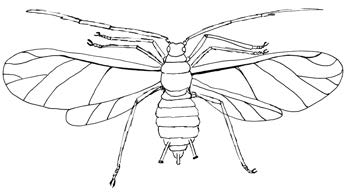
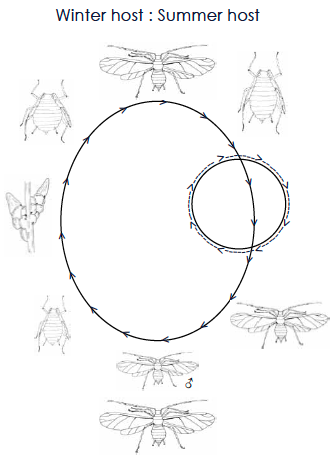
Aphids have a complicated life cycle made up of asexual and sexual reproduction with some species having host plant alternation (Fig. 3). In colder climates, aphids overwinter as eggs on woody hosts. Eggs hatch with bud burst and winged forms eventually move to perennial or annual plants to take advantage of ample nutrients. During the summer, females give live birth to clones through parthenogenisis. Asexual cloning reduces the overall development time and dramatically increases the number of multiple generations per year. Some aphids can produce more than 15 generations in a year if temperatures are moderate (65-85˚F).
Aphids in Alfalfa
Pea aphid
The pea aphid, Acyrthosiphon pisum, is found throughout North America (Fig. 6), and is the most common aphid in Utah alfalfa. Adults are ¼″ in length, and body color ranges from light green to yellow, or pale pink (Figs. 4 and 5). In addition to their large size, pea aphids can be distinguished from other aphids by the dark bands of color on the antennae (Fig. 10). Pea aphids are in alfalfa the entire summer, but reproduction is dramatically slowed down when temperatures exceed 90˚F. Colonies prefer to feed on stems and newly expanding leaves. Pea aphids may turn leaves yellow and stunt overall plant growth when present in moderate numbers (50-100/stem).
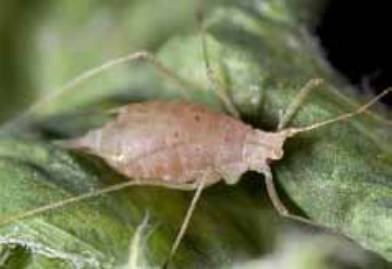
pink body color variation.2
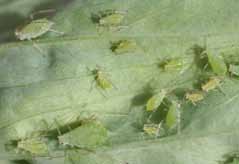
green body color variation.3
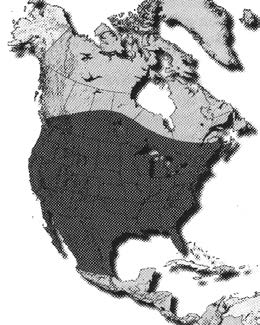
Blue alfalfa aphid
Although the blue alfalfa aphid, Acyrthosiphon kondoi, is found in Utah alfalfa and much of the United States (Fig. 7), it is less common than the pea aphid. Often blue alfalfa aphids and pea aphids are intermingled on plant stems, but can be distinguished with a few common characters. Adults are 3/16″ in length and bluish-green in color (Fig. 8). Blue alfalfa aphids can be dull or waxy and have uniformly dark antennae, compared to shiny pea aphids with dark antennal bands (Fig. 9). Blue alfalfa aphids are most productive during spring and early summer due to mild conditions; these aphids begin to decline when temperatures exceed 90˚F. Colonies prefer to cluster and feed on newly expanding leaves, but will move down to stems as the leaves mature and become crowded. Heavy infestations cause leaf crinkling, stunting, and discoloration.

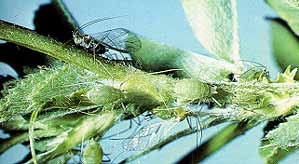
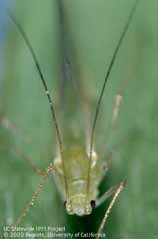
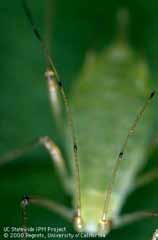
Spotted alfalfa aphid
The spotted alfalfa aphid, Therioaphis maculata, is found throughout the United States and Mexico and is occasionally found in Utah alfalfa (Fig. 13). The spotted alfalfa aphid is smaller than most aphids in alfalfa, reaching ⅛″ in length. This aphid is also distinguished because it is pale yellow with dark spots covering the abdomen (Figs. 11 and 12). Unlike the pea aphid or blue alfalfa aphid, the spotted alfalfa aphid can successfully reproduce in warm temperatures (> 90˚F). Colonies prefer to feed on the lower portions of alfalfa, including stems, petioles and leaves. Spotted alfalfa aphids transmit a plant toxin while feeding and can cause early leaf drop, distinctive vein-banding or chlorosis. In addition, this aphid produces large amounts of sugary honeydew that promote mold on leaves.
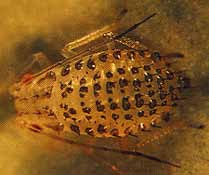
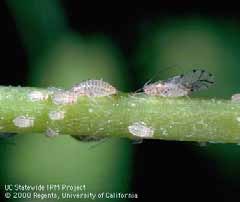

distribution in North America.4
Cowpea aphid
The cowpea aphid, Aphis craccivora, is common throughout the United States and Mexico and is becoming more common in Utah alfalfa (Fig. 16). This small aphid is less than ⅛″ in length, and is easily distinguished from other aphids in alfalfa because adults are shiny black and nymphs are dull grey (Figs. 14 and 15). The first half of cowpea aphid antennae are white, but gradually darken towards the tip, and the legs are white with dark “feet.” Colonies prefer feeding on newly expanding leaves, but cluster on leaves, blooms and stems. These aphids are most successful during early spring or late fall, and begin to decline when temperatures exceed 75˚F. Cowpea aphids transmit a plant toxin while feeding; moderate infestations can cause wilting and discoloration, and heavy infestations (>100/stem) can cause severe stunting, dieback or death.

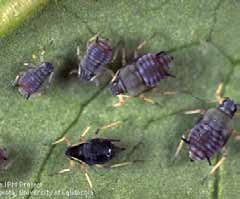
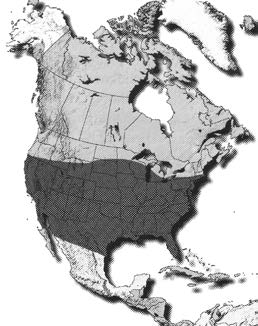
Scouting and Thresholds for Aphids
Although aphids are considered secondary pests in alfalfa, sometimes they surpass treatment guidelines (Table 2). The decision to treat for aphids in alfalfa can be difficult, but can only be made with regular visits. Scouting for aphids in alfalfa is relatively easy, and can be estimated by sweep netting or direct stem count. Fields should be scouted weekly, especially in the spring and early summer. Count aphids on at least 30 stems or take at least 20 sweeps per field, and average the number of aphids per stem or per sweep. For large fields, consider sampling multiple areas to ensure coverage.
Table 2. Treatment guidlines for aphids in alfalfa
| Growth Stage | PA* | CA* | BAA* | SAA* |
|---|---|---|---|---|
| Seedling | 5 | 5 | 1 | 1 |
| <10" | 40 | 40 | 10 | 10 |
| 10-20" | 75 | 75 | 30 | 30 |
| >20" | 100 | 100 | 50 | 100 |
* PA - pea aphid, CA - cowpea aphid, BAA - blue alfalfa aphid, SAA - spotted alfalfa aphid.
Control Options
Besides cost, there are two negative consequences for the overuse of insecticides on aphids: resurgence and resistance. Resurgence happens as a result of killing the primary insect pest (e.g., alfalfa weevil) along with the biological control agents in the field. Aphids on the undersides of leaves and lower stems will survive and the colony thrives without predators or other competition. Historically, aphids can build up genetic resistance to insecticides when complete coverage is not achieved over multiple applications. Any aphid survivors and their offspring are considered genetically resistant to that class of insecticides at any dosage. Because aphids have multiple generations with clonal reproduction, genetic resistance can build up faster than in other insects. Therefore, insecticides should only be applied if they exceed treatment guidelines (Table 2).
There are options to consider before using insecticides. Biological control, the use of resistant cultivars, and harvesting will often minimize aphids to tolerable levels in most cases. Fortunately, there are many different natural enemies to aphids (Figs. 17-20). For those fields with consistent aphids, consider cultivars with at least moderate resistance to pea aphid. Several products are registered in Utah for aphid contol in alfalfa: chlorpyrifos, cyfluthrin, gamma-cyhalothrin, lambda-cyhalothrin, and zeta-cypermethrin. Use sufficient volume and pressure to ensure contact with aphids on the lower parts of the plant. Make insecticide applications during the early morning or late evening to avoid killing foraging bees.
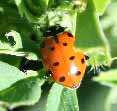

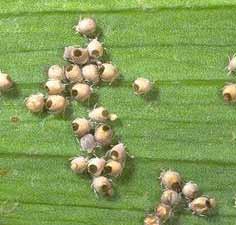

1Drawings and images courtesy of Erin W. Hodgson, Utah State University Extension (www.utahpests.usu.edu/insects).
2Images courtesy of Jack Kelly Clark, University of Davis Statewide IPM Project, 2000 (www.ipm.ucdavis.edu/PMG/crops-agriculture.html).
3Images courtesy of Whitney Cranshaw, Colorado State University Extension (www.ipmimages.org).
4Images courtesy of Handbook of Forage and Rangeland Insects, Entomological Society of America (www.entsoc.org).
5Images courtesy of University of Idaho Extension (info.ag.uidaho.edu/keys/plates/plate16.htm).
Published July 2007
Utah State University Extension
Peer-reviewed fact sheet
Authors
Erin W. Hodgson, Extension Entomology Specialist
Related Research


